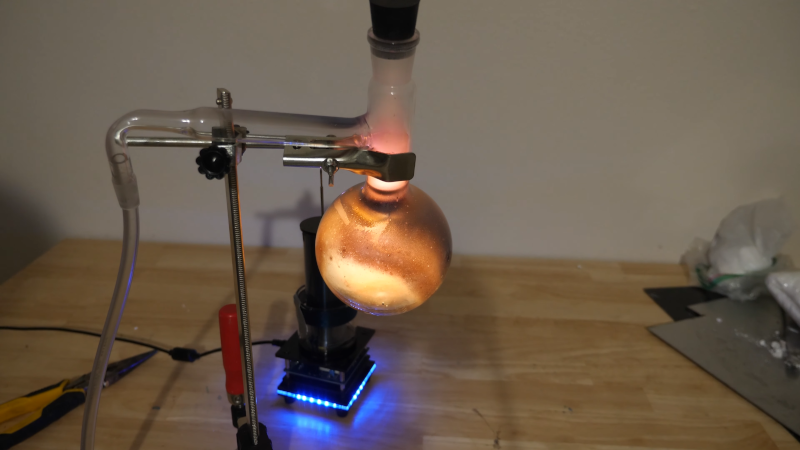Looking for a neat trick to do with your Tesla coil? [The Action Lab] uses his coil to make a metal plasma — in particular, sodium. You can see the results in the video below.
To create a metal plasma, you need a metal vapor and sodium can create a vapor at a relatively low temperature, especially in a vacuum. The resulting glow is pretty to look at, but you will need a bit of lab gear to pull it off.
Plasma — sometimes referred to as the fourth state of matter — is matter that is so hot that the electrons are pulled away forming an ionized gas. That sounds exotic compared to gasses, solids, and liquids, but it turns out that over 99% of the visible universe is plasma. Things like lightning, the sun, and neon signs are all forms of plasma. Making plasma from metal vapor is a bit unusual, though, and the sodium experiment is pretty interesting and a fun use of that Tesla coil in your closet.
This is similar to a sodium vapor lamp, and he shows one of these, also. Sodium vapor lighting is on the wane, due to LED lights. Need a Tesla coil? We’ve seen them from the near-perfect to the simple.















Making plasma from metal vapor is quite common. Sodium vapor and mercury vapor lamps are commonly used for street lighting. Fluorescent bulbs also rely on a mercury plasma.
Yes, but this uses an HF source, so EDL (electrodeless discharge lamps) would be better to mention than those running on mains. No big nitpick though. I just used to work with some in the UV range for spectroscopy of gasses in gas analyzers. We used NOx and radio frequencies, but I won’t tell more, despite my NDA being over.
Whenever my dad cooks a steak, I theorize that a sodium plasma is produced from the resulting saltiness and charred remains
Now i wnt a steak!
Borosilicate glass is amazing, ain’t it?
Nice! It would be interesting to see how far the glow continued through the evacuation glass tube and plastic pipe — though they were not heated, there was enough Na vapor to see a glow in your video when the induction coil was near.
You might also be interested in the sulfur plasma lamp.
BTW, Hg is far more common in discharge lamps — e.g., fluorescent lamps, but I can understand not mentioning it due to long-term pollution hazards.
Sneaking up on a SERF?
https://en.wikipedia.org/wiki/SERF
Not a nanny, but just curious – what happens to the human observer in the room if that glass shatters and it’s contents are splattered into the immediate area ?
If the door of the room is sealed, the previous observer is in a probability wave state of being alive or not alive, until the door is opened and an observation made by an external observer.
lols
Nice, I have a laboratory lamp that uses the same principle from the 50’s.